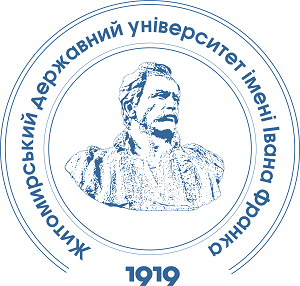THE IMPACT OF LED LIGHTING ON THE AGRO-BIOLOGICAL CHARACTERISTICS OF LETTUCE AND BASIL
DOI:
https://doi.org/10.32782/naturaljournal.11.2025.17Keywords:
spectrum, effect, intensity, lighting, lettus, basilAbstract
Global trends in vegetable growing are steadily moving towards the wider adoption of modernand energy-efficient technologies in vegetable production. Over the past 5 years, modern lighting systems have become increasingly available to Ukrainian vegetable growers and enthusiasts who are trying their hand at growing vegetables year-round. Also, Ukraine is starting to develop its own designersand manufacturers of LED lighting for plants that are not inferior in performance to foreign models,and can be much cheaper. The main purpose of this article is to analyse the foreign experience of using LED lighting and its impact on the growth and development of green vegetable crops. This article aims to shed light on the use of LED lighting in greenhouse cultivation of green vegetables, and especially on the prospects for using LED lighting in vertical farms and plant factories.The article presents the results of the study of scientific papers and articles by foreign scientists related to the impact of LED lighting on the growth and development of green vegetable crops. The article focuses on the impact of LED lighting on the economic and biological indicators of green crops when grown in controlled indoor conditions. The article also describes under what conditions and with what combinations of lighting it is possible to achieve the indicators of finished products required for production, which can ultimately be used for various purposes. For example, a combination of different percentage ratios of spectra can help to increase the biomass of a plant and vice versa, reducethe weight of biomass and increase its generative capacity. All of this may indicate the importanceand relevance of such research in Ukraine and the world.
References
Ковальов М.М., Звєздун О.М. Вирощування найпоширеніших сортів салату ромен на різних типах субстратів у NFT системах. Водні біоресурси та аквакультура. 2021. Ч. 1. C. 15–22. https://doi.org/10.32851/wba.2021.1.3.
Паламарчук І.І., Михальчук А.Я. Особливості росту та розвитку рослин салату посівного за гідропонного вирощування. Наукові доповіді Національного університету біоресурсів і природокористування України. 2024. Ч. 20. С. 1–5. http://doi.org/10.31548/dopovidi.2(108).2024.012.
Alrajhi A.A., Alsahli A.S., Alhelal I.M., Rihan H.Z., Fuller M.P., Alsadon A.A., Ibrahim A.A. The effect of LED light spectra on the growth, yield and nutritional value of red and green lettuce (Lactuca sativa). Plants. 2023. Vol. 12. № 463. https://doi.org/10.3390/plants12030463.
Chen R., Wang Z., Liu W., Ding Y., Zhang Q., Wang S. Side Lighting of Red, Blue and Green Spectral Combinations Altered the Growth, Yield and Quality of Lettuce (Lactuca sativa L. cv. “Yidali”) in Plant Factory. Plants. 2023. Vol. 12. № 4147. https://doi.org/10.3390/plants12244147.
Cope K.R., Snowden M.C., Bugbee B. Photobiological interactions of blue light and photosynthetic photon flux: effects of monochromatic and broad-spectrum light sources. Photochemistry and Photobiology. 2014. Vol. 90 (4). P. 574–584. https://doi.org/10.1111/php.12233.
Eghbal E., Aliniaeifard S., Mehrjerdi M.Z., Abdi S., Hassani S.B., Rassaie T., Nazim S. Growth, phytochemical, and phytohormonal responses of basil to different light durations and intensities under constant daily light integra. BMC Plant Biology. 2024. Т. 24. № 935. https://doi.org/10.1186/s12870-024-05637-w.
Joshi J., Zhang, G., Shen S., Supaibulwatana K., Watanabe C.K., Yamori W. A combination of downward lighting and supplemental upward lighting improves plant growth in a closed plant fac-tory with artificial lighting. HortScience. 2017. Vol. 52. № 6. P. 831–835 [Електронний ресурс]. URL: https://mahidol.elsevierpure.com/en/publications/a-combination-of-downward-light-ing-and-supplemental-upward-lighti/ (дата звернення: 10.08.2024).
Larsen D.H., Woltering E.J., Nicole C.C.S., Marcelis L.F.M. Response of basil growth and mor-phology to light intensity and spectrum in a vertical farm. Frontiers in Plant Science. 2020. Vol. 11. Article 597906. https://doi.org/10.3389/fpls.2020.597906.
McCree K.J. The action spectrum, absorptance and quantum yield of photosynthesis in crop plants. Agricultural Meteorology. 1971. Vol. 9. P. 191–216. https://doi.org/10.1016/0002-1571(71)90022-7.
Miao C., Yang S., Xu J., Wang H., Zhang Y., Cui J., Zhang H., Jin H., Lu P., He L. et al. Effects of light intensity on growth and quality of lettuce and spinach cultivars in a plant factory. Plants. 2023. Vol. 12. Article 3337. https://doi.org/10.3390/plants12183337.
Nair B.G., Bhoble S.J. A perspective perception on the applications of light-emitting diodes. Luminescence. 2015. № 30. Р. 1167–1175. https://doi.org/10.1002/bio.2919.
Pacak I., Trojak M., Skowron E. The use of UV-A radiation for biofortification of lettuce and basil plants with antioxidant phenolic and flavonoid compounds. Folia Biologica et Oecologica. 2024. Vol. 18. P. 110–121.
Stutte G.W. Light-emitting diodes for manipulating the phytochrome apparatus. Dynamac Corporation, Space Life Sciences Laboratory. Mail Code DYN-3. Kennedy Space Center. FL 32899, 2009.
Wang J., Lu W., Tong Y., Yang Q. Leaf morphology, photosynthetic performance, chlorophyll fluorescence, stomatal development of lettuce (Lactuca sativa L.) exposed to different ratios of red light to blue light. Frontiers in Plant Science. 2016. Vol. 7. Article 250. https://doi.org/10.3389/fpls.2016.00250.






